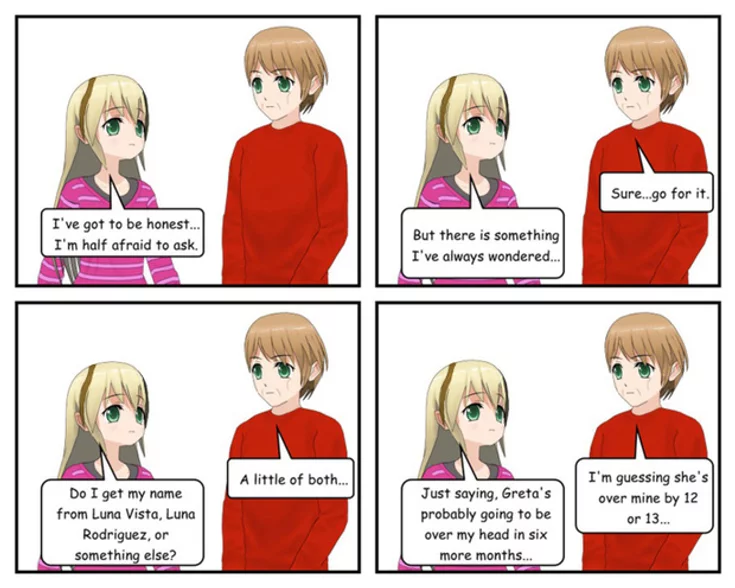Nobody's Property Illustrated Series #94
Previous... ...Next

Previous... ...Next
Interesting Facts About Coke and Pepsi – and Let’s Settle This Pop, Soda, Fizzy Debate!
I’ll be honest, I’ve never really understood the whole cola debate, but some people definitely prefer Coke, or Coca-Cola, over Pepsi, and others strongly prefer Pepsi over Coca-Cola. If you go to some parts of the Southeastern United States, people refer to all fizzy carbonated beverages, including non-Coca-Cola brands, as Coke. When I was a truck driver, I’ve been to restaurants down South where the servers ask you what kind of Coke you want – even if you’re in a restaurant that doesn’t even serve Coke products.
I’m from Ohio, so of course, all carbonated beverages are called “pop” here, and people from other places might find that weird – but if you ask for soda here, most people are going to think you mean that flavorless carbonated water – and I don’t mean Bubly or AHA. There’s a saying in Ohio – “I Drink Pop Not Soda” – which was also a Facebook group at one time and may still be.
However, Nadia from Nobody’s Property, born in and raised near Ventura, California; would most likely refer to beverages like Coca-Cola or Dr. Pepper as soda, and if you were to call either one “pop,” she might be inclined to think you’re talking about a popsicle or a lollipop. She would probably start a Facebook group called “I Drink Soda Not Pop.”
I can get away with calling Diet Dr. Pepper or Sprite “pop” in Georgia – and funny story here – when I was a truck driver, on three separate occasions I got detoured around a road closure caused by film shoots for The Walking Dead. Like Ghosts on CBS, though, “really good show.” I’ve also heard it called soda, or even “sody-pop” in most of the Southeast, though the latter is particularly common around Knoxville, Tennessee, I have noticed.
However, while I would call it “pop,” Nadia would call “soda,” or two of my friends from Tennessee would call “sody-pop” and I’m not even joking about that, or what I’m about to say, Australians seem to be in agreement to refer to pop (or soda, if you insist, Nadia) as “fizzy.” If you were wondering why Carissa might sometimes call a Coke or Pepsi that in Nobody’s Property, that’s why. Despite having been born in Pittsburgh, Carissa grew up in Australia.
Whether you call it pop, soda, or something else, there are some interesting facts about both Coke and Pepsi got their names from somewhat hilarious sources, when looking at their origin from a modern perspective. Coca-Cola gets its name from its two main ingredients: coca leaves (a source of cocaine) and the kola nut. The drink's inventor, John S. Pemberton, was a pharmacist in Atlanta, Georgia, who sought to create a medicinal tonic in 1886. He combined coca leaves and kola nut extracts with other ingredients, including carbonated water, creating a syrupy beverage. To market the product, Pemberton's bookkeeper, Frank M. Robinson, suggested the name "Coca-Cola," utilizing alliteration and highlighting the primary ingredients. The name's simplicity and memorable sound have endured throughout Coca-Cola's history, becoming one of the most iconic and recognizable brands globally. Over time, the formula evolved to remove the cocaine component, and today, Coca-Cola is a widely popular non-alcoholic beverage enjoyed by millions worldwide. Pepsi got its name not only from its original key ingredient, pepsin, which was an enzyme believed to aid digestion, but as a treatment for dyspepsia, commonly known as indigestion in modern times.
Pepsi isn’t actually that much younger than Coke. While Pepsi advertised for decades of being the preferred cola of younger generations, or the young at heart, Pepsi is actually only slightly more recent than Coke. The beverage was first created in 1893 by pharmacist Caleb Bradham, in New Bern, North Carolina; just seven years after the debut of Coca-Cola. It was called "Brad's Drink" until 1898, when it was renamed Pepsi. Bradham formulated the concoction by mixing carbonated water, sugar, vanilla, rare oils, and pepsin. As he experimented with different recipes and combinations, he realized that the beverage was not only refreshing but also had digestive properties due to the pepsin. In 1898, Bradham renamed the drink to "Pepsi-Cola" to emphasize the presence of pepsin and the kola nut, another ingredient used in the recipe. The name change, with its distinctive and catchy sound, played a significant role in the brand's success, becoming one of Coca-Cola's main competitors in the global soft drink market, particulary during the Great Depression when, in 1934, during Pepsi-Cola began offering a 12-ounce bottle for five cents, which was the current price of a 6 ounce bottle of Coca-Cola at the time. In 1961, it was shortened to Pepsi, as we know it today.
Nobody's Property illustrated series is published on nobodysproperty.com by Blake Hutchison dba Sansevieria Media. All rights reserved.
© Nobody's Property Illustrated Series, copyright 2018- | all rights reserved. This illustrated series is for entertainment purposes only. Please do not attempt any homicidal, vigilante, or other illegal acts.